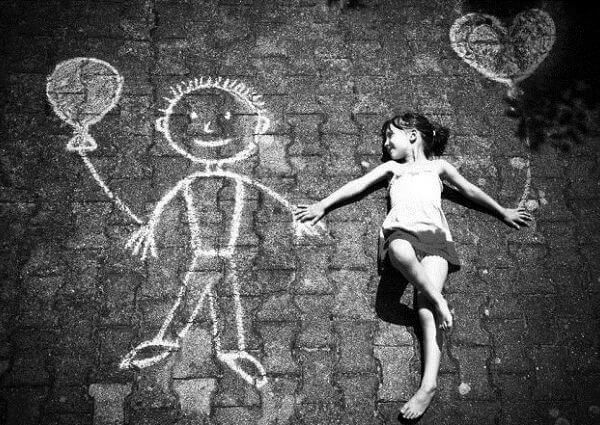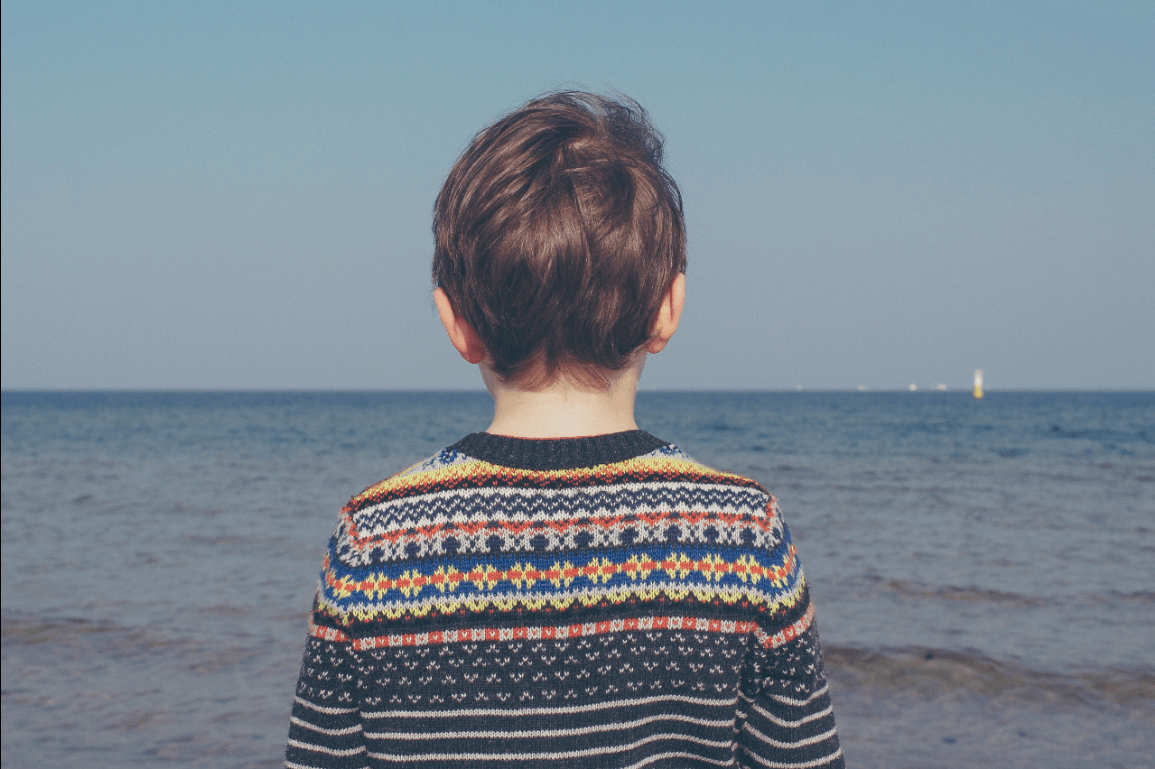Children's Grief Needs to Be Understood

Children are often forgotten when it comes to talking about grief and loss. As adults, we need to help them express their emotions, but sometimes we’re not prepared to go through this process with them. In this article, we’re going to learn strategies to help our little ones through their grief.
Fortunately, most children resolve their grief without too many complications. But that doesn’t make it any less important to help them through it and understand their grieving process a bit more. Also, the process of suffering that we go through when we lose someone will determine the process they end up using.
Childhood grief
We usually associate the grieving process with death, but it includes other losses as well: the loss of a job, of a loved one, of a pet, of a relationship… Grief is the process of emotional adaptation that follows any loss. The death of a family member or loved one is without a doubt the most difficult situation to accept. The way you experience it depends on how well you adapt to new situations and how resilient you are.
The death of a loved one can cause pain, sadness, emptiness, and loneliness. All of these emotions have to be felt in order to be managed, and that goes for children, too.

Children react to loss in different ways. It depends on their stage of growth, how they received the news, the reaction of the adults around them, and their own experiences. Adults aren’t very well-prepared to process grief because we don’t tend to talk about death, terminal illnesses, abandonment, or divorce.
But we can always learn new strategies. Here are a few:
Accepting the reality of the loss
Accompany the child through the loss. When somebody dies, that person leaves an empty space behind. It’s necessary to face the fact that the person is no longer there, and will never come back. The child also has to accept that they will never see them again, and for that it’s necessary for the adult to go through their own process of acceptance.
Managing emotions, including pain
Emotions like sadness, depression, and emptiness are normal. So is feeling pain, even physical pain. The child will have to feel those emotions and accept them. The pain must be felt, not denied or repressed, because if not, it can lead to depression and the need for therapy.
Adapting to an environment where that person is absent
This involves beginning to live without that person, and with that void. You have to make a change to adopt their roles. For example, it’s difficult to pay the bills the way mom did it. In short, this process involves a change in circumstances and a role redefinition in order to continue growing instead of getting stuck.
Adapting emotionally to the loss and continuing on with life
The memories of a loved one are never lost. You can’t deny that they existed. Rather, you find a corner of your heart just for them, so that you can still look back and talk about them without suffering because of it. The child won’t forget them, but they’ll be able to look ahead just like everyone else, with that empty space.
Poorly-processed grief in childhood can leave scars that last until adulthood.

Some behaviors during the child’s grieving process can be considered normal and not worrisome. These include changes in sleep, intestinal problems, regression to prior stages (sucking their thumb, wetting themselves), feeling guilty, and periods of intense emotions (anxiety, sadness, distress, fear).
But there are other behaviors that act as warning signs. Excessive fear of being alone, excessively imitating the person who passed away, isolating themselves from their friends, refusing to play, drops in school performance, behavior problems, and running away from home are signs that they’re suffering too much.
Stories to help the child through their grief
Talking about the death of someone close to us is difficult. Feelings and emotions arise that can make it hard to put words to the situation. But it’s necessary to express our emotions, and that’s easier to do with stories.
Stories that address the subject of death are very useful for parents and professionals to help their children understand and adapt to the new situation. Below is an example:
No Matter What. Geared towards little children, this story talks about the unconditional love between a mother and her son. In addition to bringing up the important subject of the everlasting and consistent nature of love, Debi Gliori also addresses the subject of death.
Depending on the child’s age, you can do things like spend more time with them, encourage them to express their emotions, share your emotions with them, correct their inappropriate behaviors, involve them in family activities, and calm their fears. If their symptoms persist or you don’t know what to do, you can always ask a child psychologist for help. In fact, that’s the best thing to do when the grief gets too complicated.
This text is provided for informational purposes only and does not replace consultation with a professional. If in doubt, consult your specialist.








